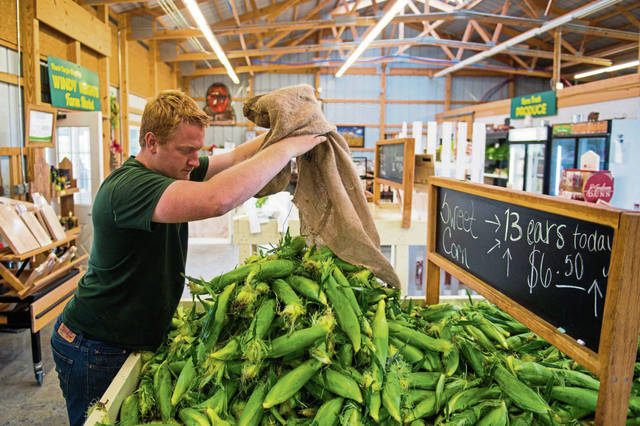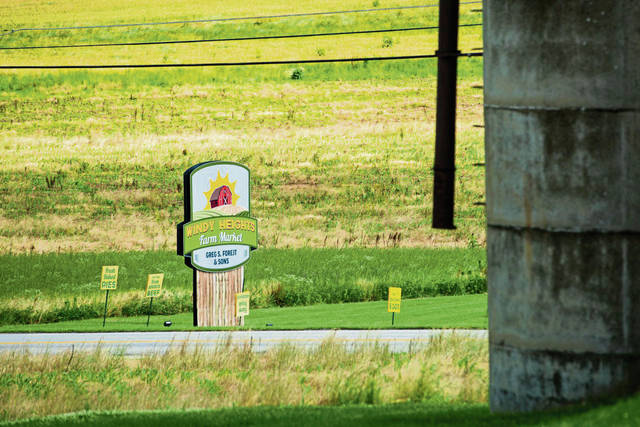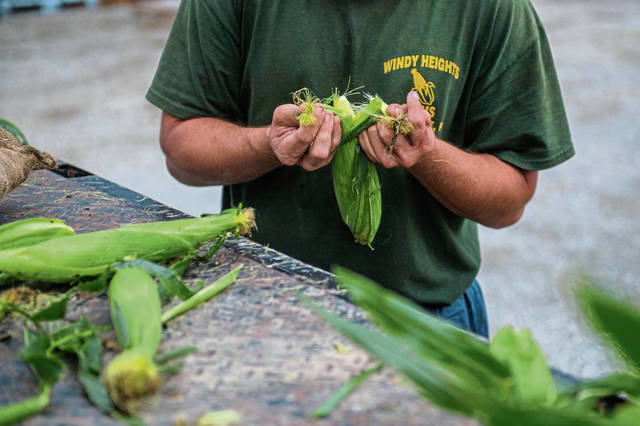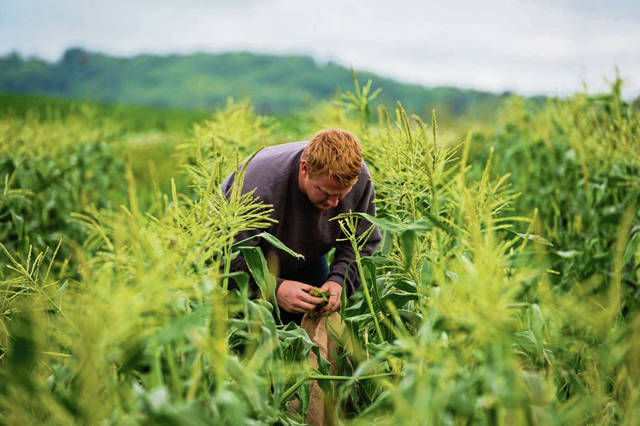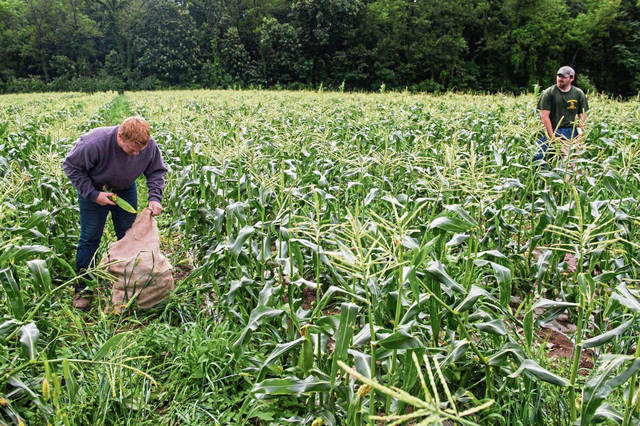Western Pennsylvania’s farmers planted early to sneak summer corn past Mother Nature



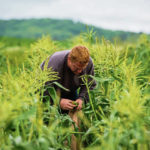
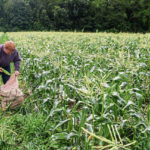
Share this post:
Western Pennsylvania farmers this year have had to plant crops “between the raindrops.”
But despite less-than-ideal planting conditions, area farmers say they expect sweet corn to be available by the Fourth of July.
While field corn planting has languished because of the wet weather, produce farmers say they got their sweet corn planted early and are starting to see results.
“The corn that’s in looks great — it’s just that the cloudiness and the rain delays the growing time,” said Brandon Christner, manager of Christner Farms, which operates a farm market at 805 Scottdale-Dawson Road in Lower Tyrone.
The farm’s first sweet corn was planted April 25, which is earlier than usual. Normal planting time for sweet corn is early- to mid-May, he said.
“We hoped to get an early start this year,” Christner said. “We’re hoping to have sweet corn by the first weekend in July. The fact that it’s been 66 degrees and cloudy every day doesn’t really help us.”
Windy Heights Farm in East Huntingdon planted its first sweet corn March 28, which was two weeks earlier than last year, said Greg Forejt Jr., whose father, Greg Sr., started the farm in the early 1990s.
“We really pushed it. We wanted to see where the limit is as to how early in Western Pennsylvania you can have sweet corn,” he said.
On Wednesday, Windy Heights Farm Market, 675 State Route 31, near Ruffsdale, announced on Facebook that it had locally grown sweet corn available for sale. Farm workers picked about 200 dozen ears of corn that morning, Forejt Jr. said.
“That’s the earliest we’ve ever had it,” he said.
The key for early sweet corn is planting in high, rocky ground, away from the lower areas that can get saturated from persistent rains, he said.
“With the high rainfall that has become typical for us, planting in fertile low-valley ground is really asking for disaster,” Forejt said. “Site selection is really important when it comes to early sweet corn.”
Keenan’s Greenhill Farms, which operates JP’s Farmers Market in Mt. Pleasant Township near Armbrust, planted its first sweet corn April 7 and hopes to have some available for its annual hog roast June 29, Joel Milowicki said.
“The sweet corn is looking good right now,” he said, noting workers will likely start picking within a week. “What we need is some heat and some sunshine.”
Milowicki said the farm normally plants sweet corn around April 20 so it’s available by July 4.
“You have to shoot for the Fourth of July. It really hurts your other sales (if you don’t). We really don’t get a ton of customers until they start coming for sweet corn,” he said.
Milowicki planted two acres of early sweet corn and plans to plant a total of 24 acres — at a pace of one or two acres a week until July 15.
“That’ll put us into Labor Day weekend,” he said. “What people don’t realize is, when you plant a patch of sweet corn, you don’t typically keep picking out of the same patch all summer long. You move from one patch to the next. … We try to have sweet corn every single day, so I have to keep on spacing it.”
Andrew Kimmel of Creekland Farms finished planting field corn in the last week of May and soybeans in the first week of June — both about two weeks late.
Kimmel and his father, Chris, farm 1,800 acres in Armstrong and Indiana counties, including 80 acres of the Ed and Sue Bruce farm in Burrell Township. Most of it is field crops that are sold for livestock feed.
“The planting season has certainly been a challenge here in Western Pennsylvania,” Kimmel said. “Some corn and soybeans will not get planted. Even the crops that we did get planted — they’re growing but they’re in no way in great condition because of all the rain we had and the lack of sunshine.”
The U.S. Department of Agriculture’s latest Crop Progress and Condition Report said more than 90% of Pennsylvania’s corn crop had been planted by mid-June and about 80% of the state’s soybean crop has been planted.
Penn State Extension said one of the wettest springs on record delayed corn planting and suggested forage alternatives as a way to offset low corn yields.
The Greater Pittsburgh area has had 21.83 inches of precipitation since the beginning of the year, which is about 4 inches above average, according to the National Weather Service.
“Planting date does influence corn yield, with optimum planting dates ranging from April 15-May 1 in the southeastern corner of the state to May 15-25 in the northern tier and Laurel Highlands,” according to Penn State Extension.
While planting date is one factor that determines yield, it’s not the only factor, said Rachel Milliron, field and forage crops educator for Penn State Extension, Armstrong County.
“Some of the bigger farmers have been able to get corn and soybeans in the ground and cover their acres,” she said. “Some people are still trying to get things in. It’s late, but it’s still possible to get a yield off.”
Pennsylvania looks positively healthy compared to Ohio, which has only 68% of its corn planted, and South Dakota, which has only 78% of its corn planted, the Washington Post reported last week.
Accordingly, the USDA lowered the projected total yield to 13.68 billion bushels, compared to last year’s corn yield of 14.3 billion bushels, the Post reported.


